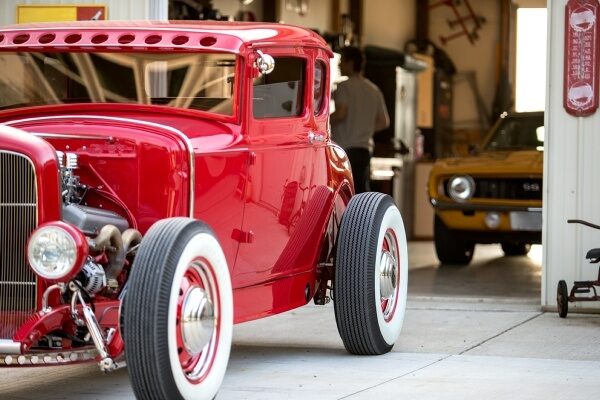Hagerty Classic Car Transporter Tips: Picking the Right Hauler
If your classic car has suffered weather- or flood-related damage that’s made extensive repair necessary, or if you need to move it to higher ground to avoid such damage, you may have recently found yourself in need of vehicle transportation for your classic car. Choosing a competent carrier and being prepared go a long way toward reducing the stress and worry that go with sending your vehicle off with a stranger. Here are some tips to help you find the best classic car transporter.
Ask around for recommendations
It’s easy to find auto-transport companies online or in publications like Hemmings Motor News and Sports Car Market, but how do you choose a trustworthy company? Ask around. Major auction companies, museums, restorers, local car club members and other collectors are all good sources for recommendations. It is essential to use a company experienced with collector vehicles so that they use nylon straps or wheel nets to prevent damage to the chassis and are careful about low ground clearance or very tall cars that might not clear the trailer roof or upper deck.
Consider more than price
Never base your decision solely on price. Most reputable carriers have similar cost structures and, with few exceptions, an unusually low price is a bad sign. The easiest way to size up a transport company is to ask how long they’ve been hauling cars. You can also visit the Federal Motor Carrier Safety Administration’s website at safersys.org to look up a company’s safety record and insurance status.
Open or Closed Hauler?
You’ll need to decide whether you want your car to travel in an open or enclosed trailer. Open transport is less expensive, but unless you’re hauling a car in need of restoration, you’re better off going with closed transport since the risk of damage to your classic is much lower. And keep in mind, most open trailers aren’t equipped with a winch for non-running vehicles, and carriers sometimes charger exorbitant fees to load inoperable cars. No matter which carrier and option you choose, it’s important to understand and agree on all fees up front.
Make sure you have classic car insurance
When it comes to insurance, a carrier is liable only for its own acts of negligence and is not responsible for unforeseeable acts of nature. That’s why it’s important to makes sure your car is covered with agreed value coverage from a company that specializes in collector car insurance before transporting it.
Keep a close eye on the weather
Keep in mind that auto transport is not a regularly scheduled service like airplane or train travel. When you place your transport order, the dispatcher must assemble a load of up to six cars, including your vehicle, and route a truck. Depending on your location and time of year, this may take anywhere from several days to several weeks. The minute you hear of an impending storm, start calling from a list of carriers you have ready in advance. In such cases, it might be best to work with a smaller local transporter who might be better able to fit you in on short notice.
How to prepare for pickup
Once you’ve booked transportation for your classic, you’ll need to prepare it for pickup. One of the best things you can do is make sure the car is clean, so it’s easier for you and the carrier to do a proper inspection. This helps avoid damage claim problems.
You’ll also want to provide written instructions regarding anything the person handling your vehicle will need to know, including information about battery and fuel cut-off switches, hidden switches, alarm instructions and any other “tricks” to starting and running your car. It’s recommended that you only have your tank half full and charge batteries to avoid additional fees for winching. Don’t leave loose articles in the vehicle or trunk, which can be damaged or cause damage to your car, and be sure your antifreeze level is adequate for the climate at both ends of the trip to avoid a cracked engine block.
When your car is picked up, the driver will inspect it and note any pre-existing damage. Upon delivery, you or a trusted representative will want to perform a similar inspection. Before signing off on the delivery, make sure to note any damage in case you need to submit a claim.
Choosing the reputable transporter will help ensure your classic gets from one place to another safe, sound and within a reasonable amount of time. Here’s a short list of top-quality transporters to get you started:
Passport Auto Transport
866-582-3185, www.passporttransport.com
Horseless Carriage Carriers
800-631-7796, www.horselesscarriage.com
Intercity Lines
800-221-3936, www.intercitylines.com
Reliable Carriers
800-521-6393, www.reliable-carriers.com



